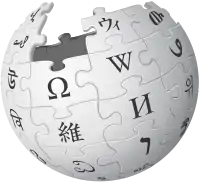tribrach
English
Etymology 1
From the Latin tribrachys, from the Ancient Greek τρῐ́βρᾰχῠς (tríbrakhus), from τρῐ- (tri-, “tri-”) + βρᾰχῠ́ς (brakhús, “short”). Compare the French tribraque.
Alternative forms
- tribracchus [16th C.], tribrack [17th C.], tribrachus [18th C.], tribrachys [18th–19th CC.]
- tribrac
Pronunciation
- (Received Pronunciation) IPA(key): /ˈtɹaɪbɹæk/, /ˈtɹɪbɹæk/
- (UK) IPA(key): /ˈtɹʌɪbɹak/, /ˈtɹɪbɹak/
Noun
tribrach (plural tribrachs)
- (prosody) A metrical foot consisting of three short syllables.
- 1589, George Puttenham, The Arte of English Poesie, book ii, chapter xiii (Arb.), page 133:
- For your foote tribracchus of all three short, ye haue very few trissillables.
- 1602, Thomas Campion, chapter IV, in Observations in the Art of English Poesie, page 11:
- We may vse a Spondee or Iambick and sometime a Tribrack or Dactile.
- 1706, John Kersey (editor), The New World of English Words (sixth edition), s.v. “Tribrachus”:
- Tribrachus, or Tribrachys, (Gr.) a Foot in Greek and Latin Verse, consisting of three short Syllables; as Populus.
- 1827, the Rev’d Canon James Tate, An Introduction to the Principal Greek Tragic and Comic Metres in Scansion, Structure, and Ictus (second edition, 1829), chapter xi: “The Ictus of the long Trochaic of Tragedy”, §5 (page 23):
- Of all the resolved feet, the Tribrach in Trochaic verse with its ictus on the first syllable ⏑́⏑⏑ is most readily recognised by the ear as equivalent to the Trochee.
- 1866, John Stuart Blackie, Homer and the Iliad, volume I, page 401:
- If the range of pure tribrachic measure, or of tribrachs intermingled with trochees, appears much wider in our song-books than in volumes of poetry written to be read.
- 1885, Thomas Dwight Goodell, “Quantity in English Verse” in Transactions of the American Philological Association XVI, page 88:
- The plain tribrach is frequent in every one’s reading.
- 1589, George Puttenham, The Arte of English Poesie, book ii, chapter xiii (Arb.), page 133:
Derived terms
Translations
prosody: metrical foot comprising three short syllables
|
|
References
- “Tribrach¹” on page 340/1 of § 1 (Ti–Tz, ed. James Augustus Henry Murray) of part i (Ti–U, 1926) of volume X of A New English Dictionary on Historical Principles (1st ed.)
Further reading

Etymology 2
English tri- + Ancient Greek βρᾰχῑ́ων (brakhī́ōn, “arm”)
Pronunciation
- (Received Pronunciation) IPA(key): /ˈtɹaɪbɹæk/
- (UK) IPA(key): /ˈtɹʌɪbɹak/
Noun
tribrach (plural tribrachs)
- A figure or object having three arms or branches.
- (archaeology) A tribrachial prehistoric flint implement.
- 1873, Albert Way, “Notes on an Unique Implement of Flint, Found, as Stated, in the Isle of Wight” in The Archæological Journal XXX, page 31:
- In a recent examination of the registers of the Ryde Philosophical Society, Mr. Martin has found, as I have been informed through Mr. Westropp’s kindness, the entry, that the flint tribrach was presented to the collection by the late Dr. Martin in 1853, with other objects from Ventnor, and as having been obtained on the shore at that place.
- 1897, Sir John Evans, The Ancient Stone Implements, Weapons and Ornaments of Great Britain (revised second edition), chapter iv, page 78:
- A singular instrument chipped out of flint, like three celts conjoined…, so as to form a sort of tribrach.
- 1873, Albert Way, “Notes on an Unique Implement of Flint, Found, as Stated, in the Isle of Wight” in The Archæological Journal XXX, page 31:
- (The addition of quotations indicative of this usage is being sought): (surveying) A circular platform on three legs, each having levelling screws, used to connect a theodolite to a tripod.
- 2006, Paul R. Wolf and Charles D. Ghilani, Elementary Surveying (eleventh edition), chapter 8, page 193:
- An optical plummet, built into either the tribrach or alidade of total station instruments, permits accurate centering over a point.
- 2006, Paul R. Wolf and Charles D. Ghilani, Elementary Surveying (eleventh edition), chapter 8, page 193:
- (archaeology) A tribrachial prehistoric flint implement.
Derived terms
- tribrachial
Translations
figure or object having three arms or branches
archaeology: tribrachial prehistoric flint implement
surveying: circular platform on three legs used to connect a theodolite to a tripod
|
References
- “Tribrach²” on page 340/1 of § 1 (Ti–Tz, ed. James Augustus Henry Murray) of part i (Ti–U, 1926) of volume X of A New English Dictionary on Historical Principles (1st ed.)
Further reading

Anagrams
This article is issued from Wiktionary. The text is licensed under Creative Commons - Attribution - Sharealike. Additional terms may apply for the media files.